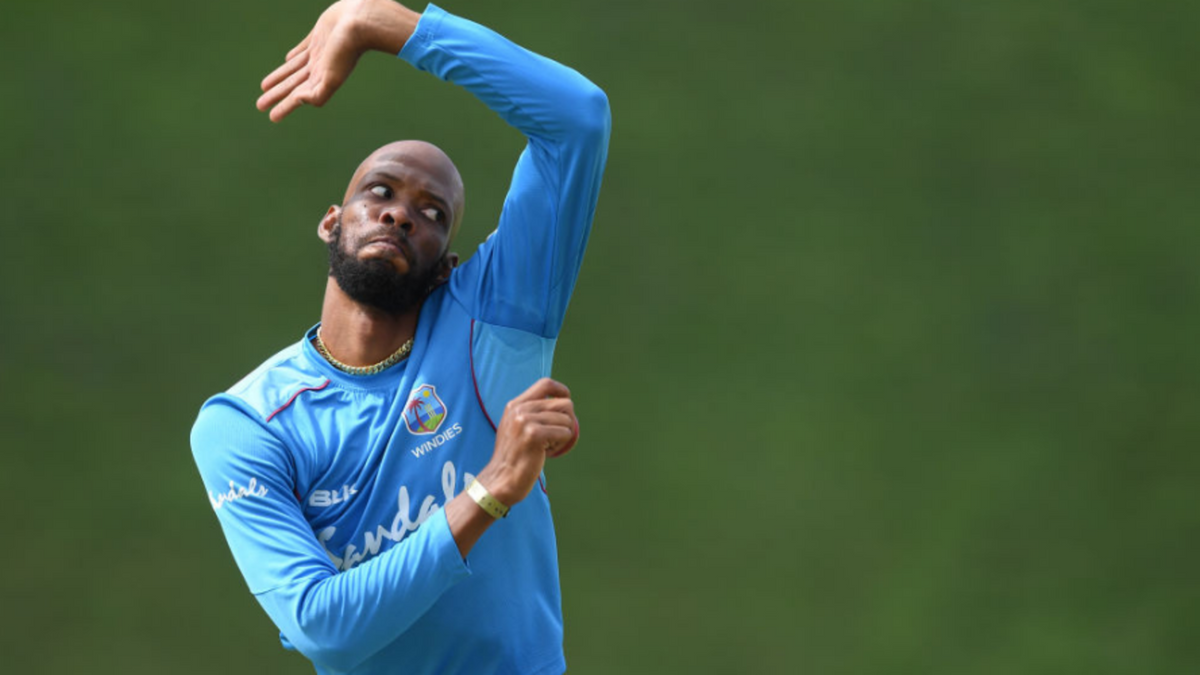
To many, Roston Chase with a strike-rate of 76.58 in the ODIs and 46.25 in Test cricket, might seem like an odd selection for the West Indies T20 squad. But there is more to this selection than Chase’s reputation as a batter in international cricket, writes Divy Tripathi.
Sign up to bet365 to be entered into a draw for the chance to win a Wisden Hoodie, terms and conditions apply, more information here. 18+ begambleaware.org
It is safe to say that there are a few international teams which can claim to understand the T20I format as well as the West Indies. This shows not only in their style of playing which seems to have been moulded around the needs of the format, but also the two T20 World Cups in their bag.
What cannot be denied is the fact, as evidenced by their record in the tournament, that the Men in Maroon take their T20 World Cups seriously. Roston Chase’s selection is yet another call, which has been taken with the aim of maintaining the West Indian ascendancy in the format.
Chase, whose solid defence has performed near-miracles for his side’s fragile Test line-up, has also recently proved himself in the shortest format of the game.
It is in the CPL where his transformation has been there for all to see. In the 2020 season, Roston Chase scored 225 runs at a strike-rate of 110.29 – unspectacular numbers, really – but he did also take nine wickets at an average of 15 and an economy of just 4.65.
In the 2021 season, he was a revelation – ending the competition as its highest run-scorer with an excellent strike-rate of 144.33 as well as taking 10 wickets at an economy of 6.92. Chase, 29, has only played 28 T20 games across his career.
Picking a player in a squad as strong as West Indies’ off the back of one good tournament is arguably a bit of a punt, but Chase gives West Indies what they need at present.
His selection, like that of Ravi Rampaul, is based on their recent form from the 2021 CPL. For the West Indies, the T20 leagues have been an important parameter for getting players ready for international tournaments – Chase has been rewarded for his good showing in both the disciplines.
The Barbadian can also contribute in several ways as a batter. Other than the established fact that he’s a right-hander in a team dominated by left-handers, Chase can play the role of a watchful batter in a flexible batting line-up. Of course, his utility might stand diminished in a heavy-duty chase of 220, where Kieron Pollard & co. will be needed ahead of him but he can play an important role to pacify the innings in case of a collapse. During a tricky chase, he could also be sent up the order, to play the role of an anchor, but one capable of stepping up through the gears if required. His presence also deepens the batting line-up, which can never be a bad thing.
Then there’s his bowling. Chase has a very decent economy rate (6.67) in the powerplay. Of his 19 wickets in the format, seven have come during the powerplay overs. In this year’s CPL, he bowled effectively in these overs, keeping the runs down and picking crucial wickets. This was evident in his seventh game of CPL 2021, where after having scored a 24-ball 30, he returned to get the opener Tion Webster, and finished his spell with figures 1-17, in a game where his St Lucia Kings won by five runs.
What worked in this instance was that Webster tried to go after Chase early in his innings, but the all-rounder got the better of him after he conceded a boundary off the previous delivery. He kept the ball up, but cut his length slightly, teasing the batter to go for another expansive slog-sweep. However, on this occasion Webster ended up giving his wicket away.
His lack of a big T20 record, might actually work in his favour, as batters might look at him as a release option, and that is where a wily operator like Chase can be most effective with the ball. So a handy option with the ball – one who can make the most of potential match-ups – and a flexible middle-order presence, you can see why West Indies have gone with Chase despite his limited T20 experience.








